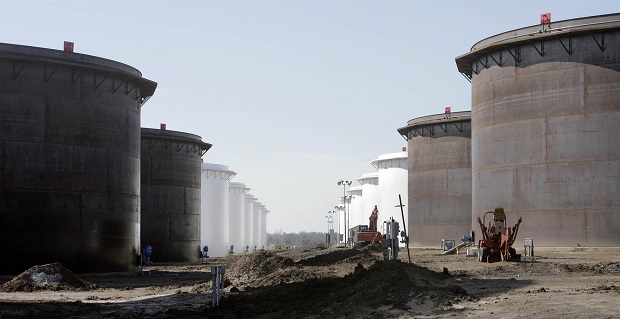
An increase in US crude inventory has forced the price of oil to drop for a third day. This March 13, 2012 photo shows older and newly constructed 250,000 barrel capacity oil storage tanks at the SemCrude tank farm north of Cushing, Oklahoma. AP FILE
NEW YORK, United States — Oil futures on Wednesday fell for the third day in a row as official US figures showed an unexpected rise in crude inventories.
In New York, a barrel of West Texas Intermediate for October delivery fell $1.65 to close at $44.70.
On London’s Intercontinental Exchange, North Sea Brent for October delivery fell $1.33 to settle at $47.04 per barrel.
US Energy Department figures released Wednesday showed that last week US commercial crude inventories rose 0.4 percent to 525.9 million barrels, a level nearly 16 percent over same point last year.
Production was down slightly at 8.49 million barrels per day, a drop of 60,000 barrels per day on last week. But imports rose by 275,000 barrels per day to 8.92 million barrels.
Falling crude prices since the beginning of the week have helped evaporate much of the gains seen in early August, when markets rallied on hopes of production limits from the Organization of the Petroleum Exporting Countries, whose members are due to meet informally next month in Algeria.
John Kilduff of Again Capital told AFP the Energy Department figures and a rising dollar had inspired despondency among oil traders.
The payrolls firm ADP on Wednesday reported that US businesses had added a solid 177,000 jobs in July, supporting the stronger US dollar on currency markets, said Kilduff.
“And then the inventory report was significantly bearish,” he said. “All that really combined to break the back of the recent rally.”